How to Grow Crookneck Squash (Yellow Squash)

"Squash Leaves" by Lesliebc Redbubble
One way is to look at the leaves. Squash plants have large, flat leaves that are usually green or yellow. If you see a small leaf with a pointy tip, you probably have a pumpkin vine. Another way to tell if you have a squash plant is to look at the flowers. Squash plants have large, showy flowers that are usually yellow or orange.
Raw Edible Plants Butternut squash (Cucurbita moschata 'butternut')
Step 1: Look at the True Leaves. Below is a picture of a young watermelon plant: As you can see, it has lobed leaves. These deep lobes are characteristic of all watermelon plants. Some might compare it to the shape of an oak leaf. In contrast, below is a picture of a cucumber leaf: You can see that the cucumber leaf is more triangular in shape.
Miz Helen's Country Cottage Squash Squash and More Squash
Identifying Squash Leaves. Squash leaves are large and have a distinct appearance that makes them relatively easy to identify. Their size can be quite impressive, often spreading wide to capture sunlight. Size and Shape: The leaves are typically broad and somewhat heart-shaped, with pointed tips. They can range from 8 to 12 inches in width and.
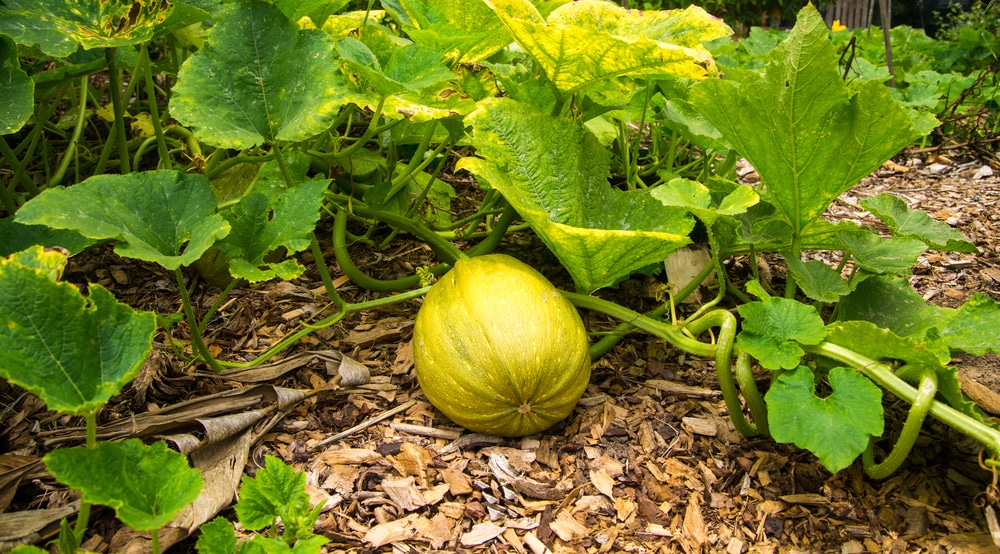
Yellow Squash Leaves, Oh My! » Top Reasons Why
The texture of squash leaves can differ as well. Some plants have smooth leaves, while others may have a slightly hairy or rough texture. Paying attention to the leaf texture can further aid you in identifying squash plants. By becoming familiar with these leaf characteristics, such as lobes, size, color, veins, and texture, you can confidently.
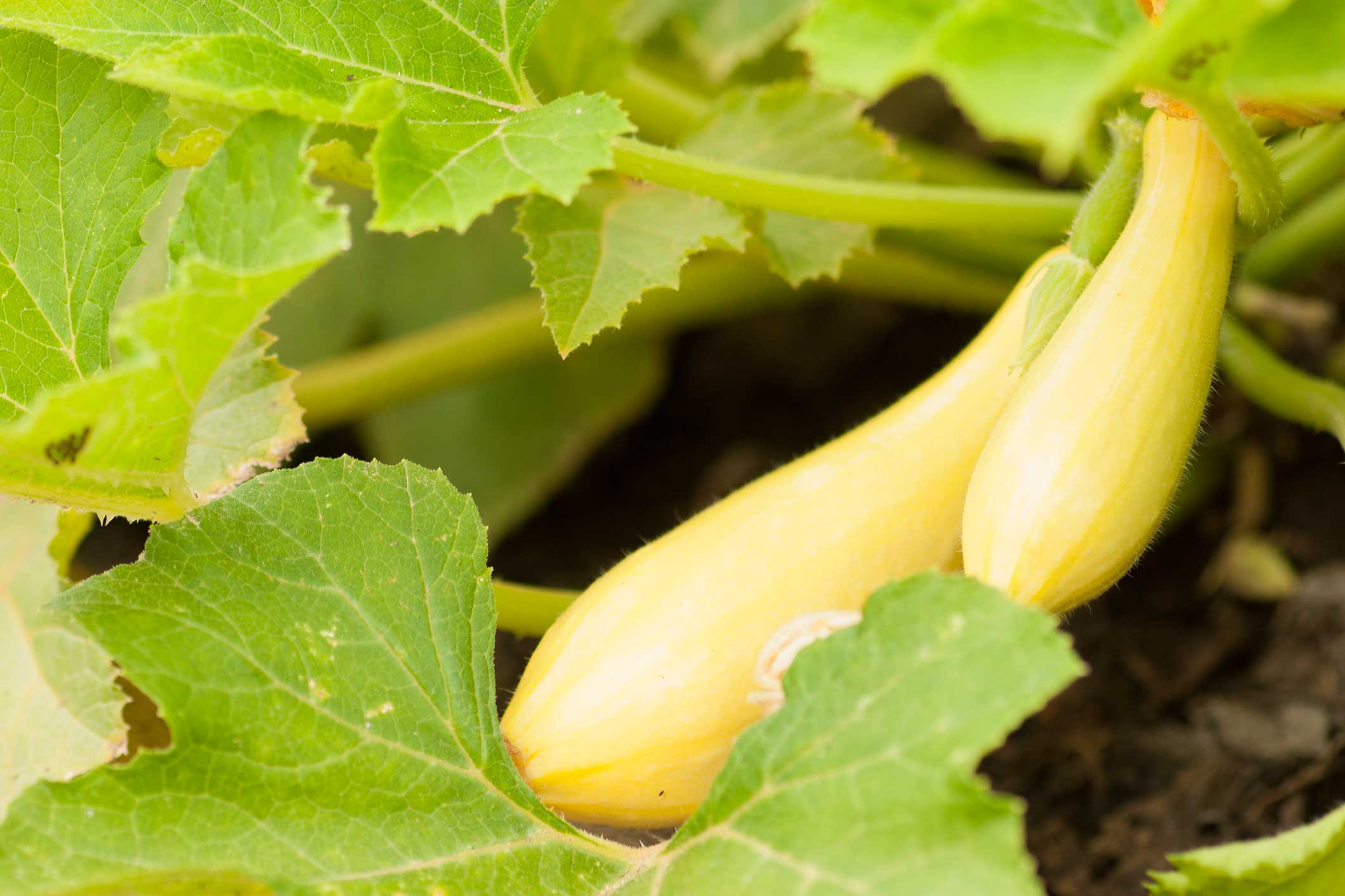
How to Grow Summer Squash
While all squash will emerge with rounded cotyledons, squash seedling leaves will vary by type the more that they grow. A summer squash will develop prickly, semi-triangular, jagged-edged leaves. A winter squash leaf will generally be broader and more rounded and, while hairy, not prickly. Learn how to grow squash. Squash (zucchini) seedlings.

Yellow Crookneck Squash (Early growth) YouTube
Winter Squash: These tend to have a thicker skin and can be stored for quite a while (all through the winter). Summer Squash: These, on the other hand, have more tender skins and do not store for as long. Think zucchini and yellow squash. - Types of Summer Squash -. Banana Squash.

Squash Leaves Taka Vegetable
Maxima. Maxima squash is some of the easiest to identify, as its leaves are plain and smooth. The fruits do not have necks and are instead rounded or blocky. Healthy Squash plant Maxima. The most common colors of Maxima squash are green and orange, with some variants that are more of a peach color!

20 Squash Varieties To Look For In Your Farmer’s Market This Autumn
Aphids. This tiny soft-bodied insect can cause squash leaves to turn yellow and wilt. Aphids transmit viruses as well that can be devastating to leaves and entire plants. Keeping your squash plants healthy through proper watering, feeding, and growing in a proper spot in the garden goes a long way in having problem-free foliage. Text: Garden.eco.
.jpg)
Grow Appalachia And the Summer Squash continues to Produce! More
Winter squash can even be used to add seasonal color to your fall table setting. 'Little Dipper' squash, pictured, is a butternut winter squash popular for its nutty, sweet flavor. It's small enough to use for individual servings. The lightbulb-shaped fruits grow to about 2 pounds each and store well for a long time.

23 Types of Squash Jessica Gavin
In addition to stem structure, the leaves of squash and cucumber plants also differ. Squash leaves are typically larger in size, with an almost round or heart-shaped appearance. They have a rough texture and a slightly fuzzy surface. Cucumber leaves, on the other hand, are smaller and more elongated. They have a smoother texture and a shiny.
Raised Bed Gardening in Arkansas 83112 Getting the most from yellow
Identifying Powdery Mildew. Of all the many pests and diseases that attack squash plants, powdery mildew is the only one that can cause whitish-gray leaves. Powdery mildew looks like flour dust when on the leaves. The fungus appears on both sides of the leaves and the stems: fruit is not usually directly affected. Here are other ways powdery mildew can affect squash plants:
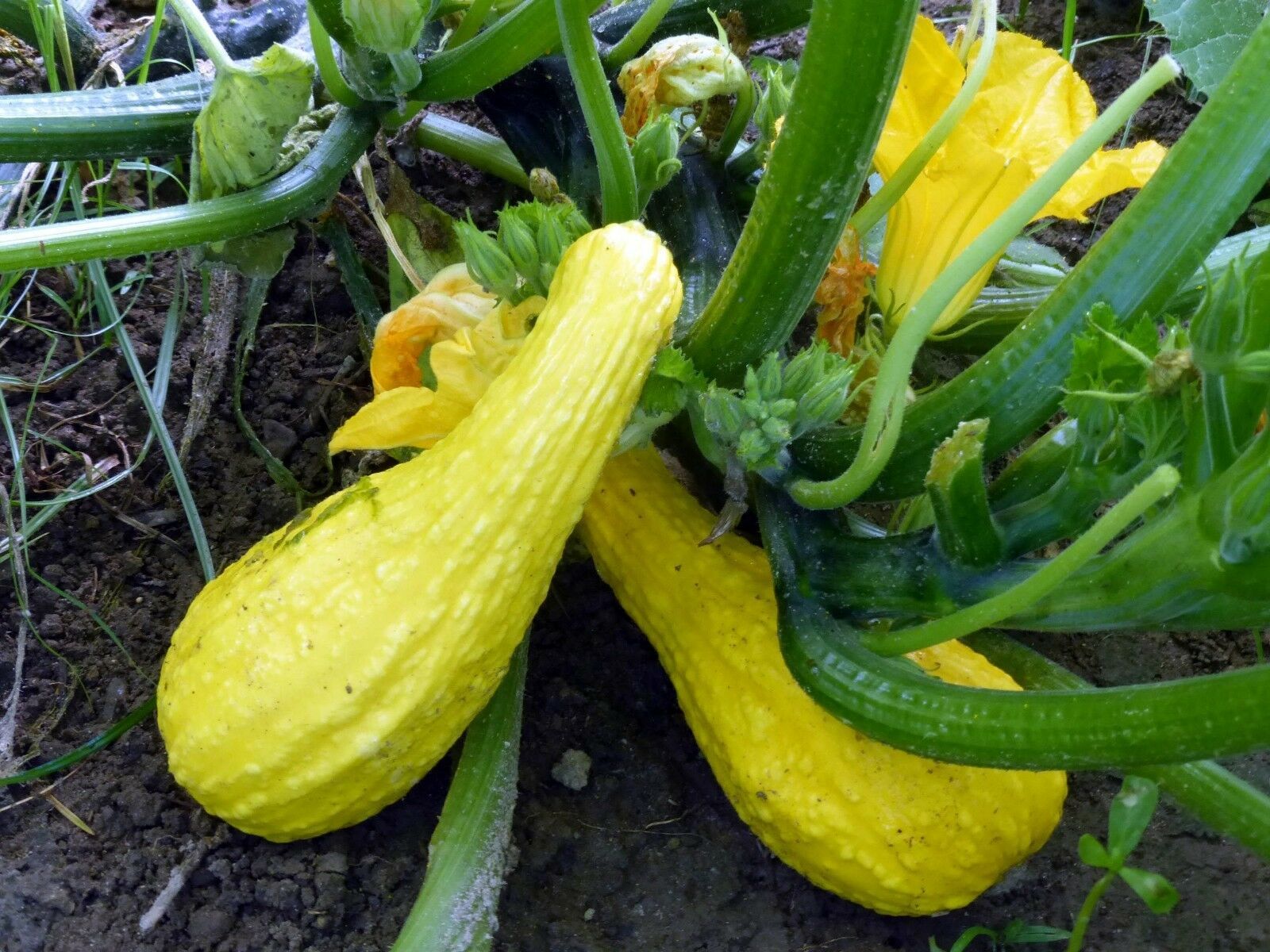
Summer Squash, Yellow Crookneck, NONGMO, Variety Sizes Sold, FREE
A common reason why squash leaves turn yellow is because the plant isn't receiving enough water. Squash is a fast-growing plant that needs a lot of water to thrive. Water allows the squash to function and grow properly, and it helps transport nutrients from the soil into the plant. To save your thirsty squash plant, make sure it's getting.
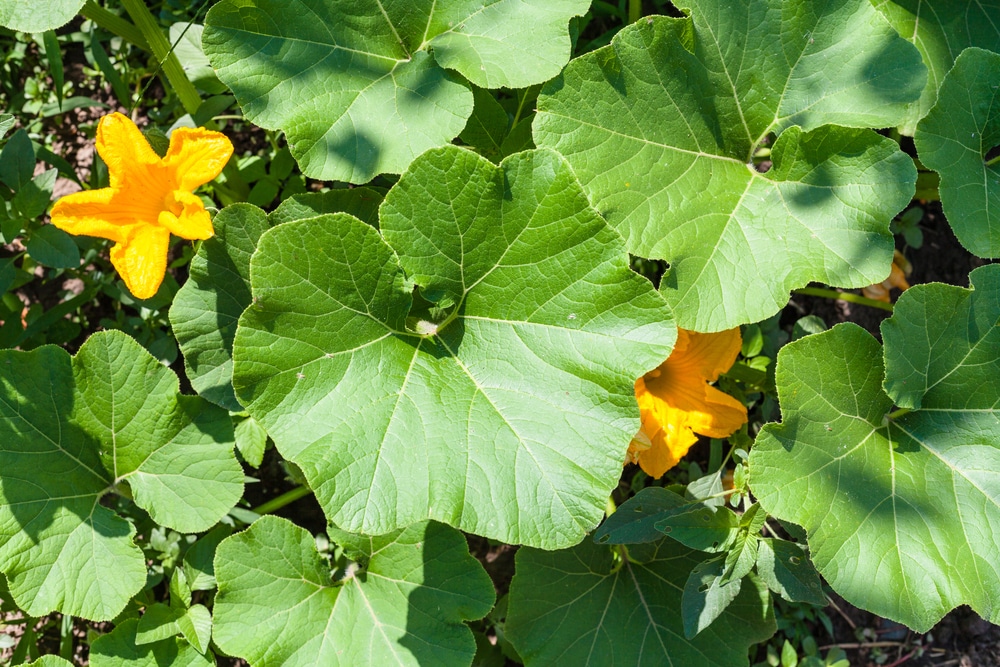
Squash Leaves Everything You Probably Didn't Know
In addition to green, some squash varieties exhibit leaves with variegated coloration. These leaves showcase mesmerizing patterns of green and yellow, adding a touch of whimsy and intrigue to the plant. This natural artwork is a result of genetic variations and can make each squash plant a unique specimen. Leaf Texture. The texture of squash.
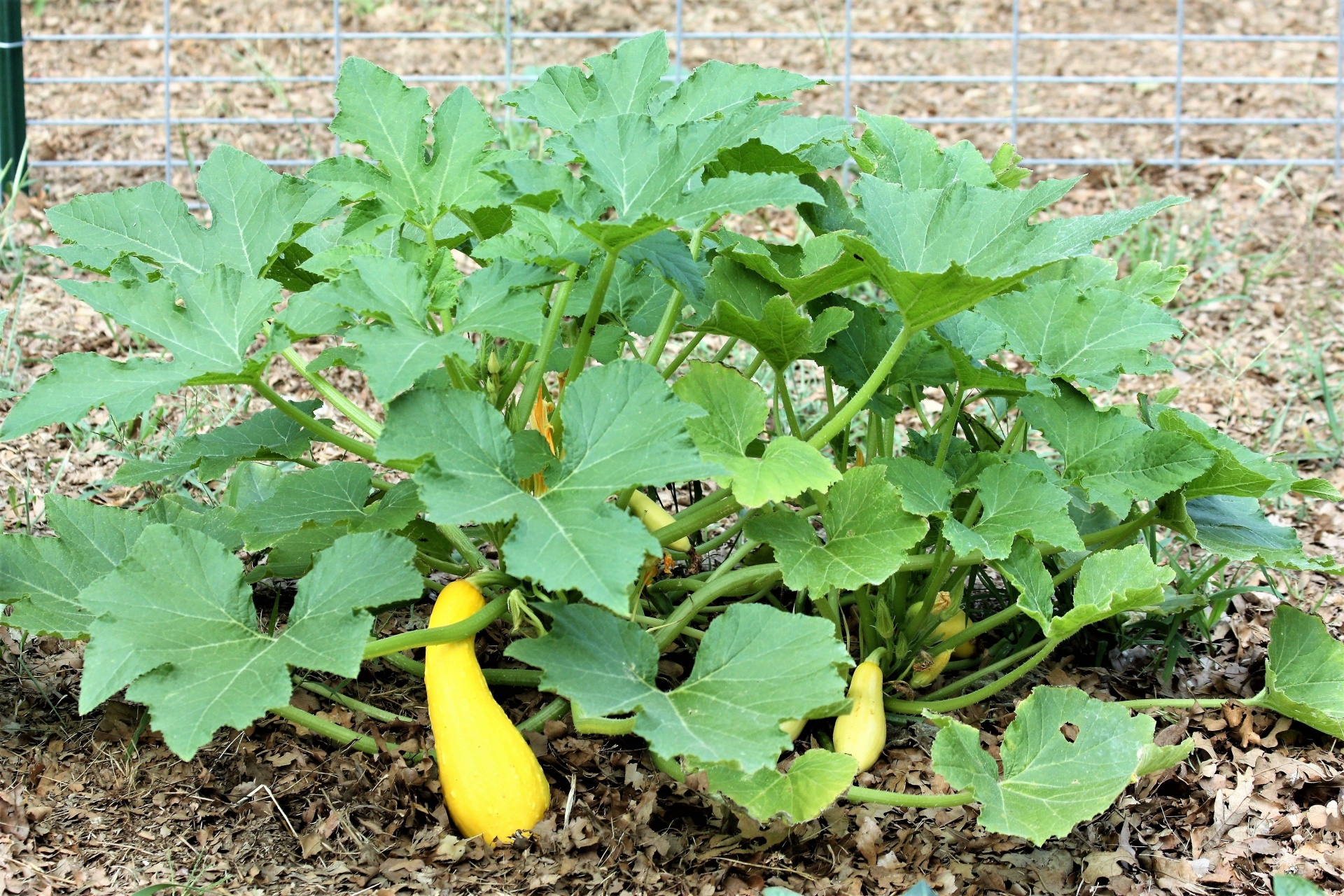
Yellow Squash Plant Free Stock Photo Public Domain Pictures
Winter squash varieties are in vine form. So plan accordingly if you are growing a vine. Vines need to be planted about 8-12 feet apart. Plus, almost all squash are fully matured and ready for harvest in 60 days. 4. Water and Fertilize. The final step to planting squash is to water regularly and consistently.
/GettyImages-178973950-7d21a73c9ec74bf39739e7a77d1b5c32.jpg)
How to Grow Crookneck Squash (Yellow Squash)
The easiest way to know how squash plants look is by the leaves. Most squash plants have large and round or oblong-shaped leaves. Their stems have four leaves on each side. Squash plants have round and cork-like stems. Most mature squash fruits are present in shades of orange, green, and peach.
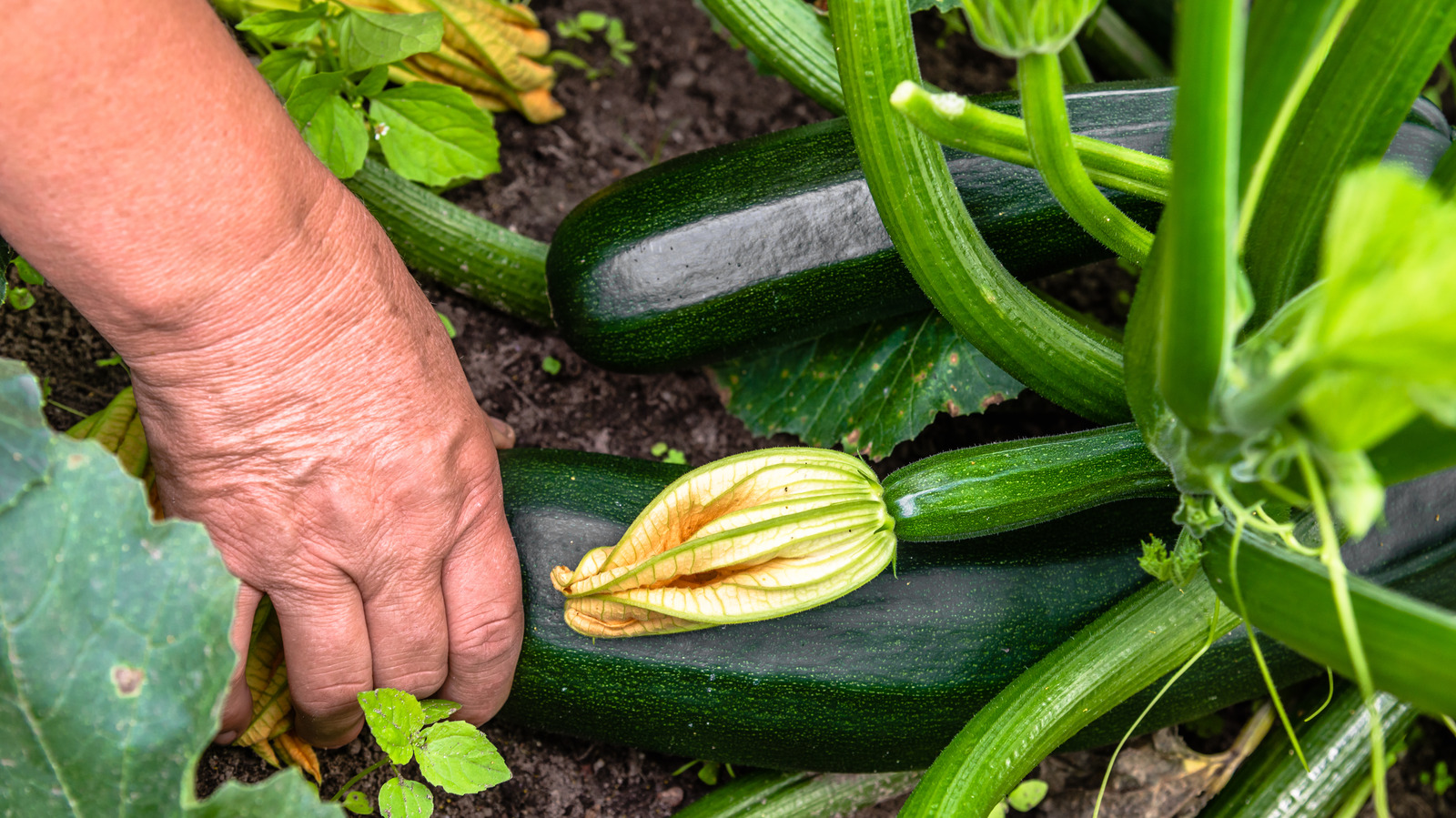
Mistakes Everyone Makes When Planting Squash
Specific Features of Squash Leaves. Squash leaves are not just large and green. They possess unique features that can indicate the plant's variety and health. Let's explore these in detail. Leaf Edges. Varieties of Edges: Squash leaves often exhibit varied edge designs, which can be a key identifier for the type of squash.